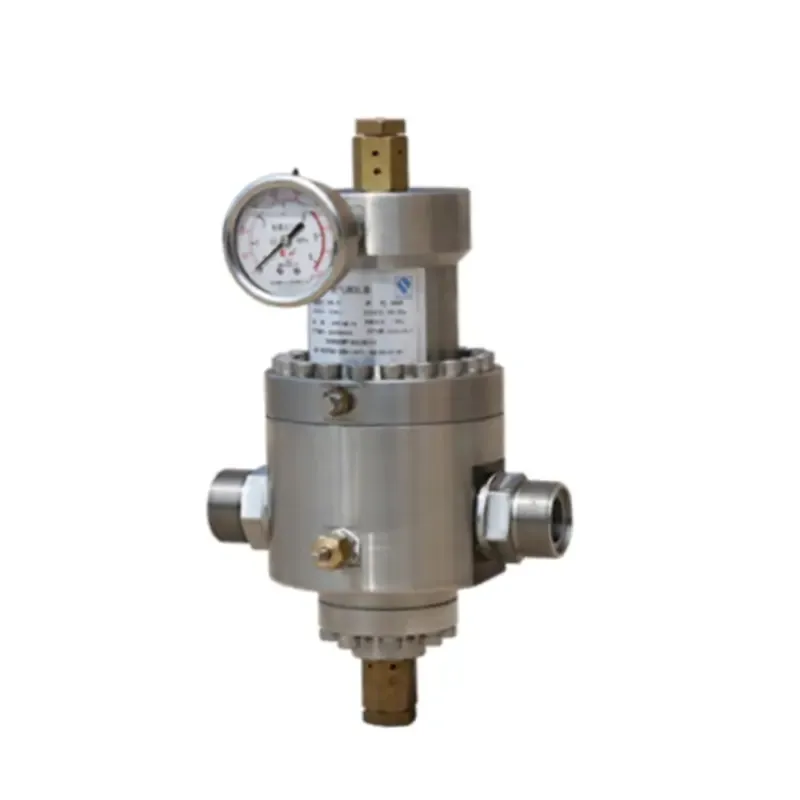
Dec . 07, 2024 06:31
Back to list
Natural Gas Pressure Regulation System Overview and Key Features
The Importance of Natural Gas Pressure Regulators in Energy Systems
Natural gas is a critical component of the global energy landscape, powering everything from residential heating to industrial processes. One of the key elements in the efficient and safe delivery of natural gas is the pressure regulation system, which ensures that gas is delivered to consumers at the appropriate pressure. This article will explore the function and significance of pressure regulators in natural gas systems, their types, and their impact on safety and efficiency.
The Role of Pressure Regulators
Pressure regulators are devices designed to control the pressure of natural gas as it flows through pipelines and into homes and businesses. They function to convert high-pressure gas from the supply line into a lower, more manageable pressure suitable for use in appliances, heaters, and industrial equipment. Proper regulation of pressure is essential for several reasons
1. Safety High pressure can lead to dangerous situations, including gas leaks, explosions, and equipment malfunctions. Regulators help prevent these incidents by maintaining the pressure within safe operating limits.
2. Efficiency Appliances are designed to operate optimally at specific pressure levels. If gas pressure is too low, appliances may not function at all; if it’s too high, they may suffer damage or operate inefficiently. Regulators ensure that the gas delivered is at the precise pressure required for optimal performance.
3. System Integrity By ensuring that the pressure in the gas pipeline remains constant and within specified limits, regulators help protect the infrastructure of the entire gas delivery system, decreasing the likelihood of pipeline ruptures or failures.
.
There are several types of pressure regulators used in natural gas systems, each designed for specific applications
منظم ضغط الغاز الطبيعي

- First-Stage Regulators These are often found at gas metering stations and reduce the pressure of incoming gas from high-pressure transmission lines to intermediate pressure levels. They are crucial for managing the gas flow into the distribution system.
- Second-Stage Regulators These devices further reduce the gas pressure to a lower level suitable for residential and commercial use. They are typically located closer to end-users and play a vital role in maintaining the correct operating pressure for gas appliances.
- Electronic Regulators With advancements in technology, electronic regulators have been developed to enhance precision in pressure management. These devices use sensors and controls to automatically adjust gas pressure according to real-time demand and conditions, improving efficiency and safety.
The Impact on Safety and Efficiency
The significance of pressure regulators extends beyond simply ensuring that gas is delivered at the right pressure. They play a pivotal role in safeguarding public health and the environment. By preventing leaks and maintaining pressure integrity, regulators help minimize the risk of environmental contamination and greenhouse gas emissions associated with natural gas systems.
Moreover, the efficiency that results from proper pressure regulation also has economic implications for both consumers and providers. When gas appliances operate at peak efficiency, energy consumption decreases, leading to cost savings for consumers. For natural gas providers, efficient systems reduce waste, optimize resource utilization, and enhance the overall reliability of gas supply.
Conclusion
In summary, natural gas pressure regulators are essential components of gas delivery systems, ensuring that natural gas is transported safely and efficiently from production facilities to end-users. By maintaining the correct pressure levels, they enhance safety, improve efficiency, and contribute to the integrity of the overall energy infrastructure. As the demand for natural gas continues to grow in various sectors, the importance of advanced pressure regulation technology will only increase, making it a critical area for ongoing research and development in the energy industry. Understanding and improving the functionality of pressure regulators is vital to ensuring a sustainable and secure energy future.
Next:
Latest news
-
Safety Valve Spring-Loaded Design Overpressure ProtectionNewsJul.25,2025
-
Precision Voltage Regulator AC5 Accuracy Grade PerformanceNewsJul.25,2025
-
Natural Gas Pressure Regulating Skid Industrial Pipeline ApplicationsNewsJul.25,2025
-
Natural Gas Filter Stainless Steel Mesh Element DesignNewsJul.25,2025
-
Gas Pressure Regulator Valve Direct-Acting Spring-Loaded DesignNewsJul.25,2025
-
Decompression Equipment Multi-Stage Heat Exchange System DesignNewsJul.25,2025

